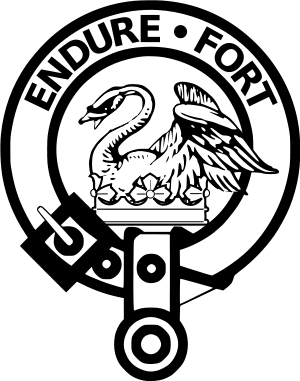Here Is A Little Information About My Family
I have a wife, Jennifer, and two daughters, Emma and Amelia. Growing up mostly in the South, for better or worse, I was given a strong sense of heritage and family. At the same time, to quote a good friend of mine, “I married my wife to have a partner, not for sex, to have someone to wash my clothes, to carry on my name or any of that stuff.” So, my genealogy is only a hobby that I maintain so that future generations will have a reference to go to.
My name is of English origin but I’m not terribly fond of the English heritage. We’ll just say that I’ve traced it back to a journeyman clockmaker that had to leave town when the master clockmaker’s daughter came up pregnant. My lineage traces back to the Isle of Skye through my Grandmother, Betty Auld-Hedge. The Auld Clan is a Sept of Clan MacLeod of Skye. My mothers surname, Speegle, derives itself from Spiegle, and is of German descent.
It is my Celtic roots that I hold sacred. They are one of a few people that the Romans never conquered.
My wife’s name sake, Neal, is an American derivative of O’Neil of Ireland. I haven’t traced the heritage on that branch yet. My wife’s mother is a Lindsay. As best as been found through legitimate genealogy research, this makes her of Royal Scottish heritage. Clan Lindsay’s heritage is a very robust one. Jennifer’s uncle, Ron Lindsay, is the curator of Clan Lindsay International and the Project Coordinator of the The Lindsay Surname DNA Project.
Early History of the Earls Of Crawford

The house of Lindsay, of which the earl of Crawford is the head, traces its descent back to the barons of Crawford who flourished in the 12th century, and has included a number of men who have played leading parts in the history of Scotland.
It is said that ”though other families in Scotland may have been of more historic, none can in genealogical importance equal that of Lindsay,” and the Lindsays claim that “the predecessors of the 1st earl of Crawford were barons at the period of the earliest parliamentary records, and that, in fact, they were never enrolled in the modern sense of the term, but were among the pares, of which kings are primi, from the commencement of recorded history.” Again we are told, “ the earidom of Crawford, therefore, like those of Douglas, of Moray, Ross, March and others of the earlier times of feudalism, formed a petty principality, an imperium in iinperio.” Moreover, the earls “had also a concilium, or petty parliament, consisting of the great vassals of the earldom, with whose advice they acted on great and important occasions.” Sir James Lindsay (d. 1396), 9th lord of Crawford in Lanarkshire, was the only son of Sir James Lindsay, the 8th lord (d. c. 1357), and was related to King Robert II.; he was descended from Sir Alexander Lindsay of Luffness (d. 1309), who obtained Crawford and other estates in 1297 and who was high chamberlain of Scotland. The 9th lord fought at Otterburn, and Froissart tells of his wanderings after the fight. He was succeeded by his cousin, Sir David Lindsay (c. 1360—1407), son of Sir Alexander Lindsay of Glenesk (d. 1382), and in 1398 Sir David, who married a daughter of Robert II., was made earl of Crawford.
(Source: The 1911 Edition Encyclopedia)
Recent History of the Earls of Crawford
James Ludovic Lindsay (1847-1913) was the 26th Earl of Crawford & 9th Earl of Balcarres. His father, the 25th Earl of Crawford was the author of the “Lives of the Lindsays“. James Ludovic Lindsay’s early interest in astronomy led him to build the great Dunecht Observatory at the family estate named Dunecht.
(Source: Clan Lindsay International)
Related articles
- Isle of Skye – Strollamus, United Kingdom (travelpod.com)
